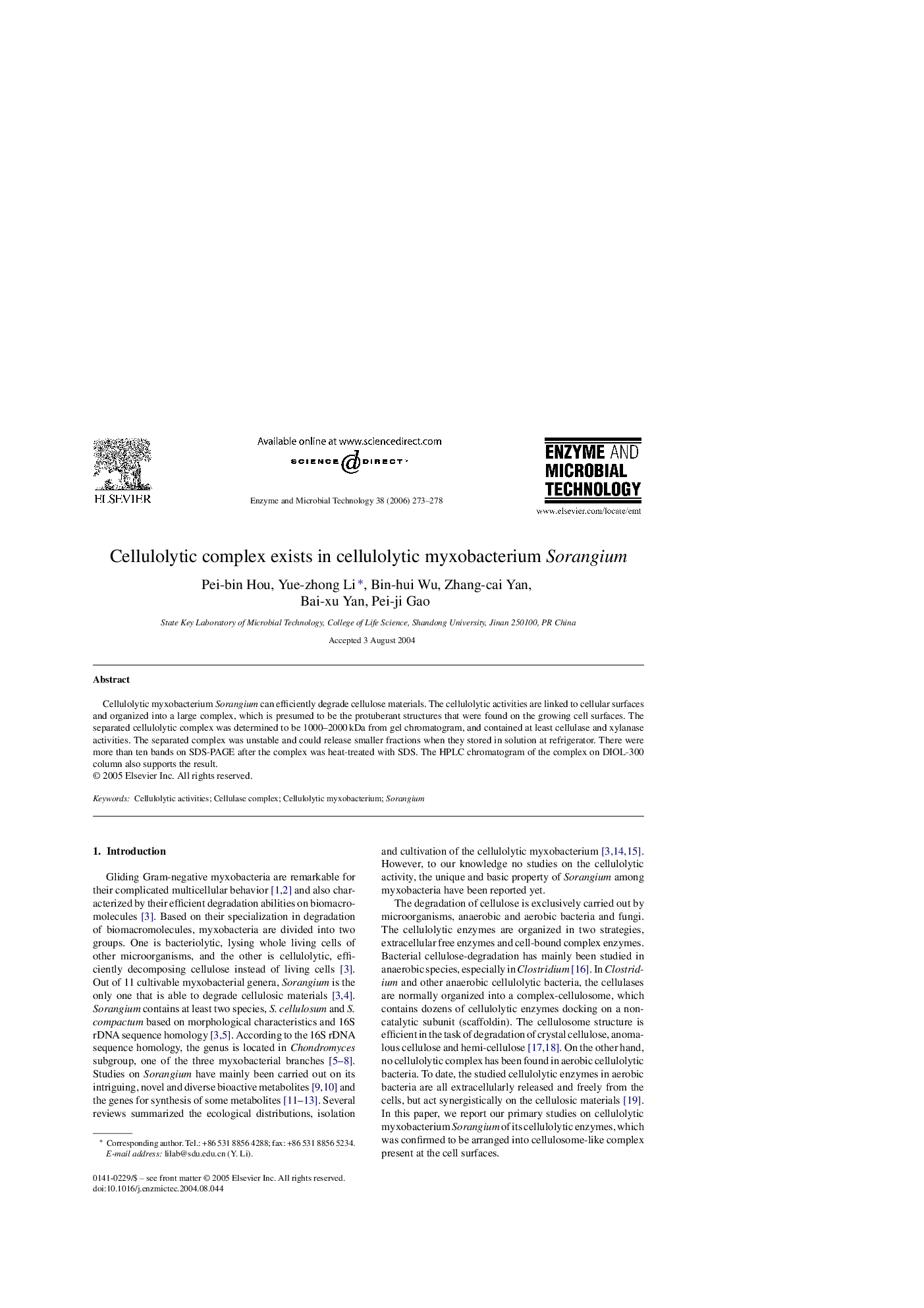| Article ID | Journal | Published Year | Pages | File Type |
|---|---|---|---|---|
| 18590 | Enzyme and Microbial Technology | 2006 | 6 Pages |
Abstract
Cellulolytic myxobacterium Sorangium can efficiently degrade cellulose materials. The cellulolytic activities are linked to cellular surfaces and organized into a large complex, which is presumed to be the protuberant structures that were found on the growing cell surfaces. The separated cellulolytic complex was determined to be 1000–2000 kDa from gel chromatogram, and contained at least cellulase and xylanase activities. The separated complex was unstable and could release smaller fractions when they stored in solution at refrigerator. There were more than ten bands on SDS-PAGE after the complex was heat-treated with SDS. The HPLC chromatogram of the complex on DIOL-300 column also supports the result.
Keywords
Related Topics
Physical Sciences and Engineering
Chemical Engineering
Bioengineering
Authors
Pei-bin Hou, Yue-zhong Li, Bin-hui Wu, Zhang-cai Yan, Bai-xu Yan, Pei-ji Gao,
